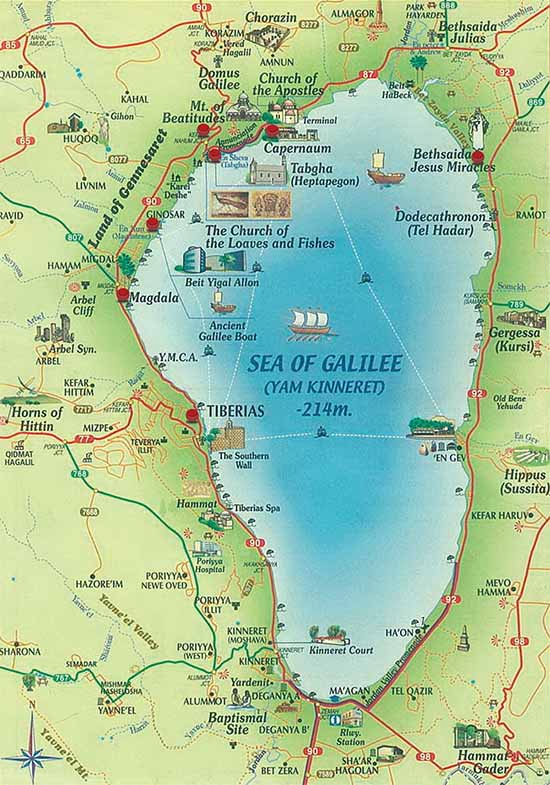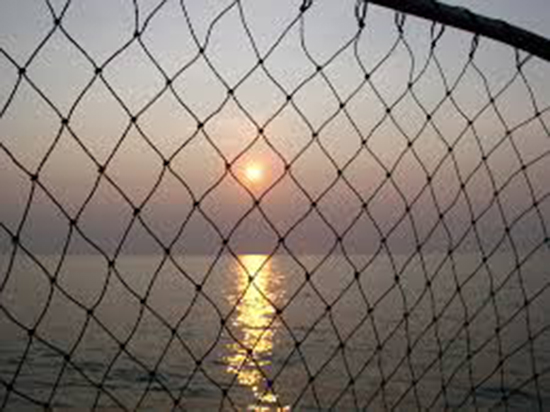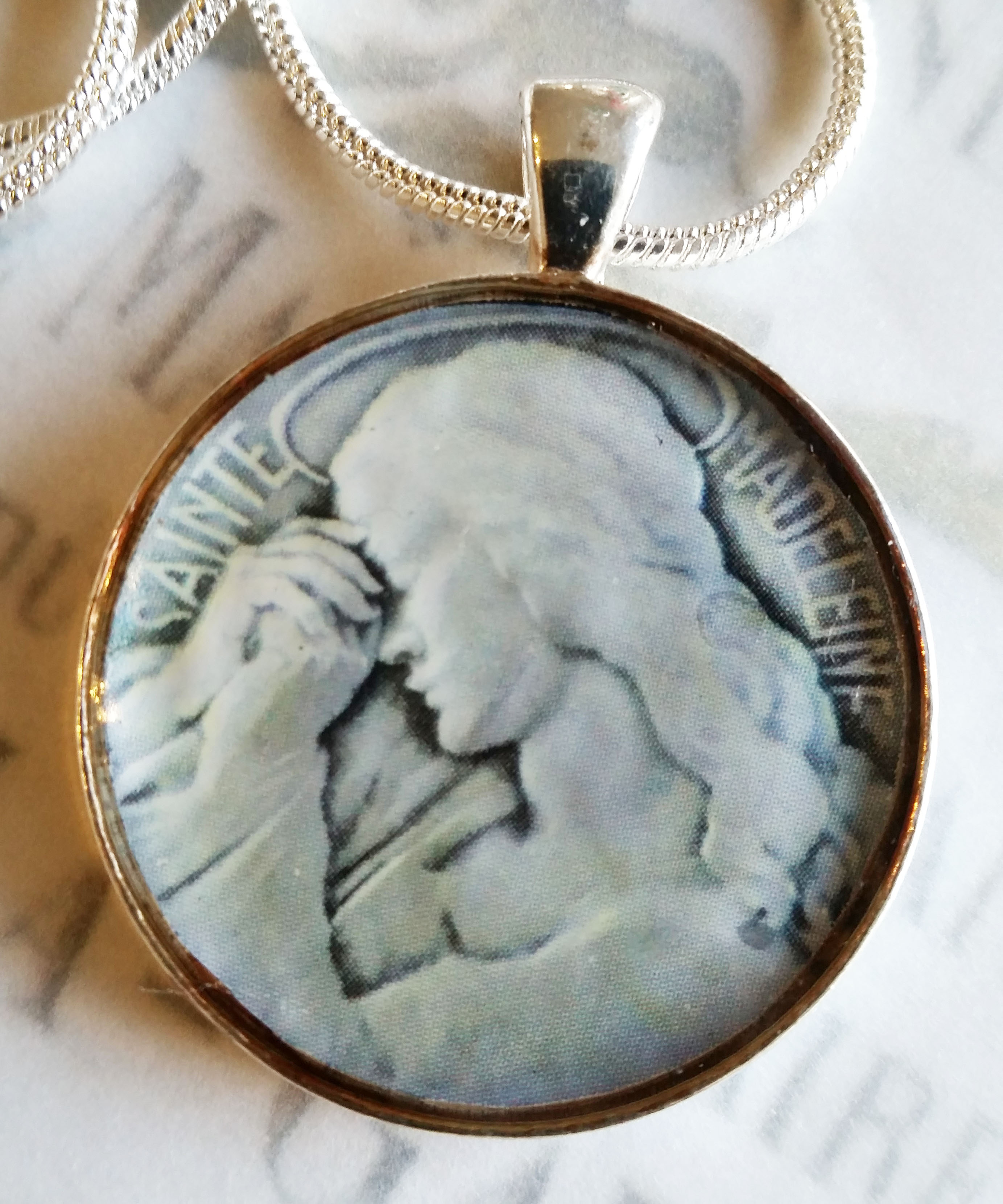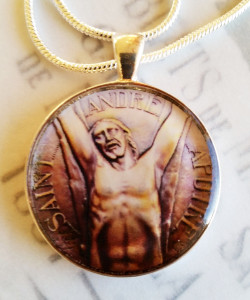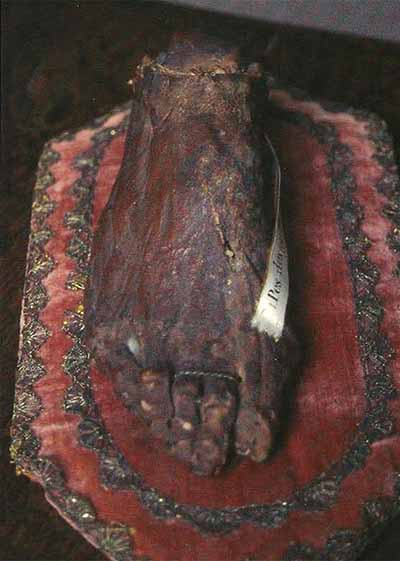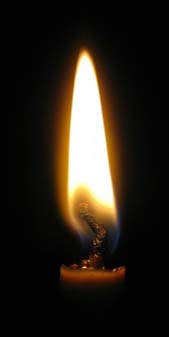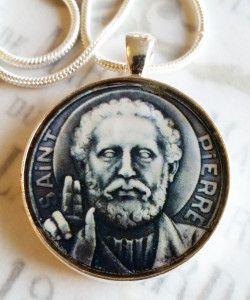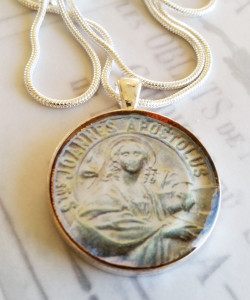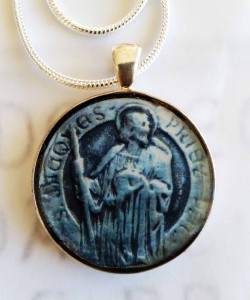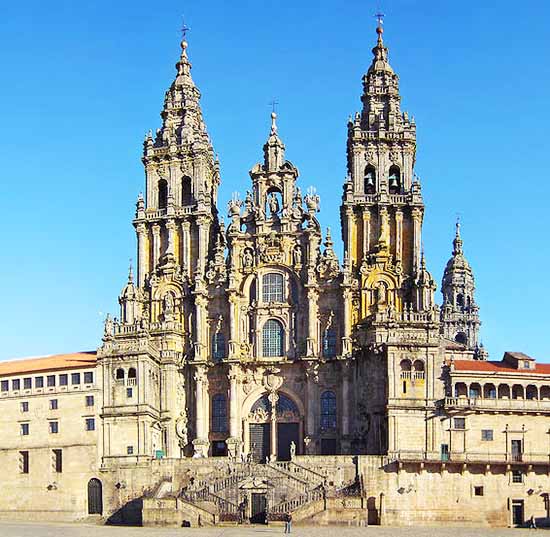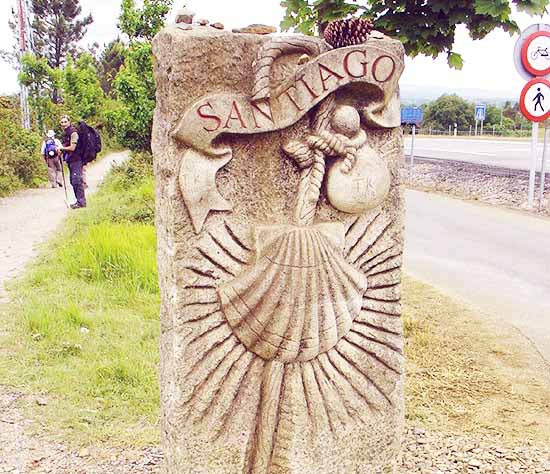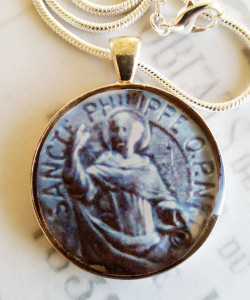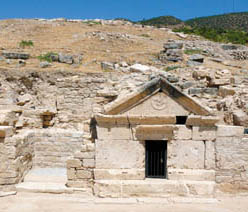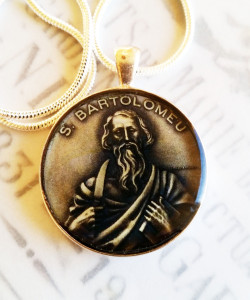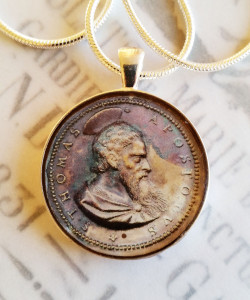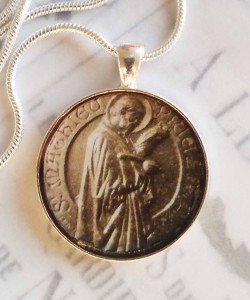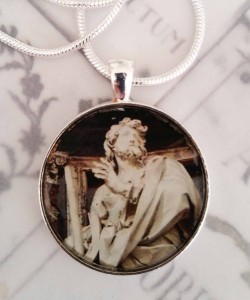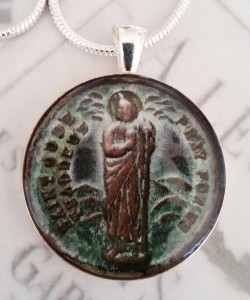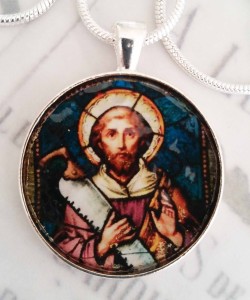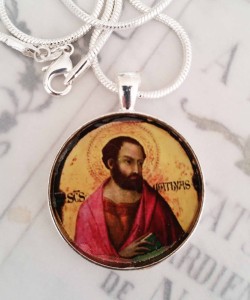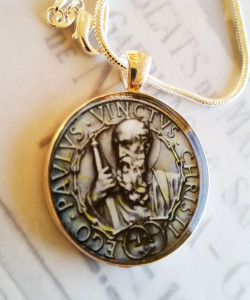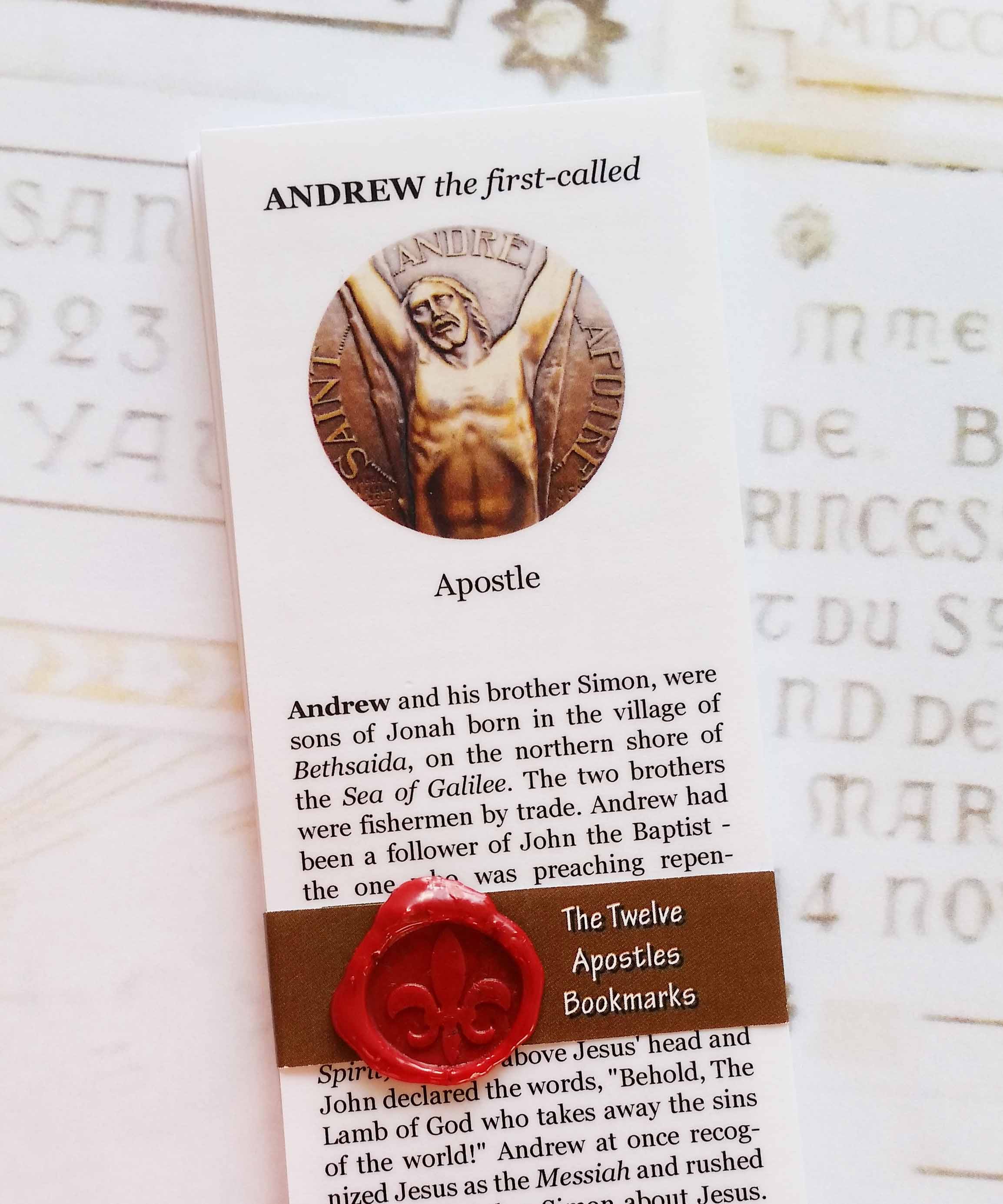.
EASTER MORNING
JESUS appears to MARY MAGDALENE
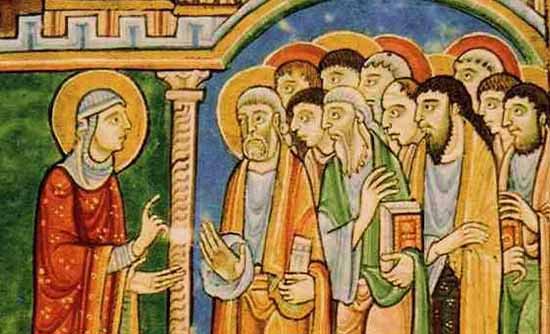 9 Now when Jesus was risen early on the first day of the week, he appeared first to Mary Magdalene, out of whom he had cast seven devils. 10 And she went and told them that had been with him, as they mourned and wept (Mark 16:9-10).
9 Now when Jesus was risen early on the first day of the week, he appeared first to Mary Magdalene, out of whom he had cast seven devils. 10 And she went and told them that had been with him, as they mourned and wept (Mark 16:9-10).
APOSTLE is from the Greek “apostlos” which means “a delegate, messenger, one sent forth with orders,” from the verb apo-stellein, “to send out.” And so the apostles (formerly disciples) were sent out by God and specifically by Jesus to proclaim the gospel to the known world and told to make disciples of all nations (Matt 28:18-20; Acts 1:8).
Many people wrongly assume that the words “apostle” and “disciple” have the same meaning in the New Testament. However, one first has to be trained as a “disciple” (learning from the teacher), before one can be sent out as an “apostle” (representing the teacher). Also, not all “disciples” are necessarily sent out on a particular preaching mission (thereby functioning as “apostles”).
The transformation of Jesus’ favored disciples to their new role of “apostle,” occurred after the resurrection on the mountain to which Jesus had directed them in Galilee: “Therefore go and make disciples of all nations, baptizing them in the name of the Father and of the Son and of the Holy Spirit, and teaching them to obey everything I have commanded you. And surely I am with you always, to the very end of the age.” Jesus gave this command shortly before He ascended into heaven, and it essentially outlines what Jesus expected them to do in His absence.
.
APOSTLES…. what we really know about them
We know that Jesus found these ordinary human beings living ordinary lives around the Sea of Galilee, and gathered them one-by-one to come and “follow Him.” It was in this very small area in the Galilee, along the shore of the Sea of Galilee, that Jesus spent most of the three years of his public life. Archaeological discoveries suggest that Galilee in the 1st century was a region composed of the wealthy, the business owner, the artisan, and the peasant. It was a region of religiously observant and devout Jews.
S E A O F G A L I L E E
.
MARY MAGDALENE Apostle to the Apostles
Jesus most likely met Mary Magdalene at Magdala on the Sea of Galilee, for that is where she lived. She is also known as “Mary of Magdala.”
The gospel presents Mary Magdalene as an active character at Jesus’ crucifixion, burial, and empty tomb. Certainly Mary Magdalene filled the role of an apostle as she was “one sent forth with orders.” These were specific orders given first by an angel at the empty tomb: “…go quickly and tell His disciples that He has risen from the dead, and indeed, He is going before you to Galilee. There you will see Him (Matthew 28:7);” and “But go, tell His disciples and Peter that He is going before you to Galilee. There you will see Him, just as He told you (Mark 16:7).”
Then by the risen Christ: “…go to My brothers and tell them, ‘I am ascending to My Father and your Father, to My God and your God (John 20:17).'” And again by the risen Christ: “…Do not be afraid. Go tell My brothers to go to Galilee, and there they will see Me (Matthew 28:10).”
Later tradition proclaimed Mary Magdalene “Apostle to the Apostles” because the risen Christ appeared to her first and gave her instructions to relay His message to His “brothers” (favored disciples), which she carried out immediately. Saint Mary Magdalene is really the first apostle, and that is why I have chosen to present her first. She is the patron saint of preachers. Her feast day is July 22.
ANDREW the first-called
Andrew and his brother Simon, were sons of Jonah born in the village of Bethsaida, on the northern shore of the Sea of Galilee. The two brothers were fishermen by trade. Andrew had been a follower of John the Baptist – the one who was preaching repentance. Andrew was present with John the Baptist the day Jesus approached John to be baptized in the Jordan River (which runs through the Sea of Galilee). A dove (symbol of the Holy Spirit) flew just above Jesus’ head and John declared the words, “Behold, The Lamb of God who takes away the sins of the world!” Andrew at once recognized Jesus as the Messiah and rushed to tell his brother Simon about Jesus. The two became followers…. Andrew is known as the “First-called.”
At the beginning of Jesus’ public life, Andrew and his brother were said to have lived in the same house as Jesus in Capernaum, on the northern shore of the Sea of Galilee. The gospels tell us that Andrew was the one who told Jesus about the boy with the loaves and fishes (John 6:8), which took place in Tabgha, just 3 miles from Capernaum. When Philip wanted to tell Jesus about certain Greeks seeking Him, he told Andrew first (John 12:20-22). Andrew was present at the Last Supper.
After receiving the Great Commission from the risen Christ on the mountain in Galilee, Andrew traveled on foot to Scythia. He preached along the Black Sea and up the Dnieper River as far as Kiev (Ukraine). Then he traveled all the way to Novgorod (Russia). He became the patron saint of Ukraine, Romania and Russia.
Andrew was martyred by crucifixion at the city of Patras in Greece. Andrew was bound, not nailed, to an X-shaped cross, or “saltire,” now commonly known as “Saint Andrew’s Cross,” supposedly at his own request, as he deemed himself unworthy to be crucified on the same type of cross as Jesus had been. The main relics of Saint Andrew are kept in the Basilisa of Saint Andrew in Patras, Greece, although I have seen the “foot of Saint Andrew” in the sacristy of Cathédral Saint-Sauveur in Aix-en-Provence, France.
Saint Andrew is the patron saint of several countries and cities including: Barbados, Romania, Russia, Scotland, Ukraine, Amalfi in Italy, Esgueira in Portugal, Luqa in Malta, Parañaque in the Philippines and Patras in Greece. He is also the patron saint of fishermen, fishmongers and rope-makers. The Feast of Saint Andrew is November 30.
.
THE GREAT COMMISSION
PETER the rock
Simon Peter and Andrew were sons of Jonah born in the village of Bethsaida, on the northern shore of the Sea of Galilee. The two brothers were fishermen by trade. Andrew was a follower of John the Baptist and was present the day Jesus came to be baptized. John the Baptist told all that day to follow Jesus, the Lamb of God, and Andrew did just that.
According to the gospel, Jesus was walking along the shore of the Sea of Galilee watching the fishermen brothers, and called them to become “fishers of men.” Later Jesus said to Simon of Jonah, “You are Peter, and on this rock I will build my church.”
Peter played a leadership role and was with Jesus during events witnessed by only a few apostles, such as the Transfiguration. According to the gospels, Peter confessed Jesus as the Messiah, was part of Jesus’ inner circle, three times denied Jesus, and preached on the day of Pentecost. According to Christian tradition, Peter was crucified in Rome under Emperor Nero Augustus Caesar. He was crucified upside down at his own request, since he saw himself unworthy to be crucified in the same way as Jesus Christ. His relics remain under Saint Peter’s Basilica. The Catholic Church considers Peter to be the first Pope. According to Catholic doctrine, the direct papal successor to Saint Peter is Pope Francis.
Saint Peter is the patron saint of WORKERS: Bakers, Bridge builders, Butchers, Fishermen, Harvesters. Cordwainers, Horologists, Cobblers. Masons, Locksmiths, Net makers, The Papacy, Shipwrights. Saint Peter’s feast day is June 29.
JOHN the beloved
John the Apostle, known as “John the Beloved” and “John the Evangelist” was the son of Zebedee and Mary Salomé who lived near Bethsaida. John’s brother was also an apostle – James the Greater. Zebedee and his sons were fishermen.
Jesus Calls His First Disciples
Mark 1:19-20—19 Going on a little farther, He saw the son of Zebedee, and John his brother, who were also in the boat mending their nets. 20 Immediately He called them; and they left their father Zebedee in the boat with the hired servants, and went away to follow Him.
John was the only Apostle who remained at the foot of the Cross with the Blessed Mother, as well as Mary Magdalene and his own mother (Mary Salomé). Church tradition holds that John is the author of the Gospel of John and four other books of the New Testament – the three Epistles of John and the Book of Revelation. In the Gospel, authorship is internally credited to the “disciple whom Jesus loved.”
John lived more than half a century after the martyrdom of his brother James, who was the first Apostle to die a martyr’s death. John traveled to Ephesus (Asia) with the Blessed Mother, whom Jesus had turned over in his charge, and outlived the remaining apostles, being the only one not to die a martyr’s death. John died in Ephesus at the age of 94. A stately church was erected over his tomb. It was afterwards converted into a Mohammedan mosque. Saint John is the patron saint of booksellers, hospitals, nurses, the mentally ill and the dying. The feast of Saint John is December 27.
JAMES the greater
James the greater was the brother of John the Apostle. James is named “the Greater” to distinguish him from the Apostle James “the Less,” who was probably shorter in stature. James was the elder of the two brothers. Jesus knew the brothers’ nature when He first met them and chose “Boanerges” as a fitting nickname, which means “sons of thunder” (Mark 3:17). Typical of Galileans, they were religious, hardy, industrious, brave and strong defenders of the Jewish nation.
After the ascension, James traveled preaching the gospel all the way to the Iberian Peninsula (Spain and Portugal). He landed with his followers in northeastern Spain. One day in prayer he had a vision of the Blessed Mother, who gave him a wooden statue of herself on a pillar and told him to build a church in her honor and then to return to Jerusalem. James built a small chapel for her in Compostela (which was later replaced with the Basilica on the same spot). He then returned to Judea (44 AD) and was martyred by decapitation—Herod Agrippa I, the Judean monarch and grandson of King Herod I, cut off the head of James with his own sword. James’ disciples carried his body by sea to Iberia, where they landed at Padrón on the coast of Galicia, and took it inland for burial at Santiago de Compostela. The name James is “Sant Iago” in Spanish.
Way of Saint James
The tradition at Compostela placed discovery of the relics of Saint James in the time of King Alfonso II (791-842) and of Bishop Theodemir of Iria. These traditions were the basis for the pilgrimage route that began to be established in the 9th century, and the shrine dedicated to James at Santiago de Compostela, in Galacia in Spain, and became the most famous pilgrimage site in the Christian world. The Way of St. James is a tree of routes that cross western Europe and arrive at Santiago through northern Spain. Eventually James became the patron saint of Spain. The feast of Saint James is July 25.
The scallop shell, often found on the shores in Galicia, has long been the symbol of the Camino de Santiago. The scallop shell also acts as a metaphor. The grooves in the shell, which meet at a single point, represent the various routes pilgrims traveled, eventually arriving at a single destination: the tomb of James in Santiago de Compostela.
.
Brothers Peter and Andrew & brothers James and John
form the first group of disciples, which later became apostles
.
PHILIP
Philip was from Bethsaida, the same city as Andrew and Simon Peter, on the northeastern shore of the Sea of Galilee. Philip was also present with John the Baptist when John pointed out Jesus as the Lamb of God, and he attended the wedding at Cana, and introduced Bartholomew (known as Nathanael) to Jesus.
News about Jesus had spread throughout the land and multitudes were following Him. When Jesus needed to feed the five thousand (near Tabgah) he tested Philip’s faith by asking him what to do. (John 6:5-6) 5 When Jesus looked up and saw a great crowd coming to Him, He said to Philip, “Where shall we buy bread that these may eat?” 6 He said this to test him, for He Himself knew what He would do. Because there was no village nearby to purchase food, and they had very little money, Jesus’ question was clearly designed to set before Philip a predicament that had no human solution. (John 6:7) 7 Philip answered Him, “Two hundred denarii worth of bread is not sufficient for each of them to receive but a little.” Philip had no hope and therefore failed the test of faith. Hadn’t Philip been with Jesus for quite some time and watched the many miracles Jesus performed from day to day?
After the infusion of the Holy Spirit on Pentecost, Philip left to preach in Greece, Syria and Asia Minor. He died on the cross at Hierapolis in Phrygia (now Turkey) around 80 AD. His remains were later moved first to Constantinople and then to the Church of the Twelve Apostles in Rome. In 2011 the tomb of the apostle Philip was discovered in a field in Hierapolis, Turkey amid the remains of a fourth-or-fifth-century church.
The feast of Saint Philip is celebrated on the same day as the feast of the Apostle James the lesser – May 3.
BARTHOLOMEW
Bartholomew was born at Cana in Galilee and was the son of a farmer. He was living in Bethsaida. Bartholomew is sometimes referred to as “Nathanael” in the gospel. Philip was an old friend of Nathanael’s.
The Calling of Philip and Nathanael
(John 1:47-51) 43 The next day Jesus wanted to go to Galilee, and He found Philip, and said to him, “Follow Me.” 44 Now Philip was from Bethsaida, the city of Andrew and Peter. 45 Philip found Nathanael and said to him, “We have found Him of whom Moses in the law, as well as the prophets, wrote, Jesus of Nazareth, the son of Joseph.”
46 Nathanael said to him, “Can any good thing come out of Nazareth?” Philip said to him, “Come and see.”47 Jesus saw Nathanael coming to Him and said concerning him, “Here is an Israelite indeed, in whom is no guile.” 48 Nathanael said to Him, “How do You know me?” Jesus answered him, “Before Philip called you, when you were under the fig tree, I saw you.” 49 Nathanael answered Him, “Rabbi, You are the Son of God! You are the King of Israel!” 50 Jesus answered him, “Because I said to you, ‘I saw you under the fig tree,’ do you believe? You will see greater things than these.” 51 And He said to him, “Truly, truly I say to you, hereafter you shall see heaven opened and the angels of God ascending and descending upon the Son of Man.”
In fulfilling the Great Commission, Bartholomew preached the Gospel in India. Then he preached in Ethiopia, Mesopotamia, Parthia and Lycaonia. Finally he went to Greater Armenia. Both Bartholomew and Jude Thaddeus brought Christianity to Armenia in the 1st century.
Bartholomew was flayed (skinned alive) and beheaded at the command of King Astyages at Albanopolis (Armenia), for converting his brother Polumius, the king of Armenia, to Christianity. Bartholomew’s body was first carried to the island of Lipara, then to Benevento, and finally to Rome in the Island of the Tiber, where it is venerated by the pious faithful. Saint Bartholomew’s feast day is August 24.
Doubting THOMAS
Thomas is also called “Didymus” (the twin), yet it is unclear why he had that nickname. He was a Jew living in the Galilee. There are no recorded facts of how he met Jesus. Thomas first appears in the gospel as a symbol of strength, encouraging the others to follow Jesus to Judea to visit His sick friend Lazarus, even though it is was extremely dangerous: (John 11:16) Then Thomas, who is called Didtmus, said to his fellow disciples, “Let us go also, that we may die with Him.”
At the Last Supper, Jesus told the disciples that he was going to prepare a place for them. 5 Thomas said to Him, “Lord, we do not know where You are going. How can we know the way?” 6 Jesus said to him, “I am the way, the truth, and the life. No one comes to the Father except through Me.” (John 14:5-6)
He becomes the “doubting Thomas,” after Jesus’ resurrection: 24 But Thomas, one of the twelve, called The Twin, was not with them when Jesus came. 25 So the other disciples told him, “We have seen the Lord!” But he said to them, “Unless I shall see in His hands the imprint of the nails, and put my finger into the place of the nails, and put my hand into His side, I will not believe. 26 After eight days His disciples were again inside with the doors shut, and Thomas was with them. Jesus came and stood among them, and said, “Peace be with you.” 27 Then He said to Thomas, “Put your finger here, and look at My hands. Put your hand here and place it in My side. Do not be faithless, but believing.” 28 Thomas answered Him, “My Lord and my God!” 29 Jesus said to him, “Thomas, because you have seen Me, you have believed. Blessed are those who have not seen, and have yet believed.” (John 20:25-29)
The Great Missionary
Thomas went to India in 52 AD, landing on Kerala, the southwestern region on the Malabar coast. Thomas raised the first cross in India and performed one of his earliest miracles: When he encountered a group of Brahmans throwing water into the air as part of a ritual, he asked why the water fell back to earth if it was pleasing to their diety. My God, Thomas said, would accept such an offering. Thomas flung a great spray into the air, and the droplets hung there in the form of glistening white blossoms. Most onlookers converted on the spot.
Thomas built seven churches in Kerala, which are considered to be “apostolic churches,” the ultimate seal of approval for a Christian group. He later moved to the east coast of south India. Thomas was stabbed with a spear during prayer on the “Big Hill” near Madras on December 21, 72 AD, and was buried in Mylapore, on the east coast of India. The faithful in India still call themselves “Christians of Saint Thomas.” His feast day is July 3.
MATTHEW
Matthew, also known as “Levi,” was born in Galilee, son of Alphaeus, Matthew lived in Capernaum and worked at a nearby border crossing as a customs agent where it was his job to collect toll or duty on all of the people, animals, and goods. He worked under Herod Antipas, ruler of Galilee and Perea. “Toll collectors” or “tax collectors” were very unpopular with average Jewish citizens because they were viewed as greedy and corrupt. They often pocketed the difference for themselves. They were considered traitors because they consorted with the Romans who were despised as pagans and an unwelcome foreign presence in their homeland.
Since Matthew was a tax collector he would have been literate in Aramaic and Greek. Matthew’s call was described in Mark 2:14: As He passed by, He saw Levi the son of Alphaeus sitting at the tax collector’s station, and He said to him, “Follow Me.” And he rose and followed Him.
Matthew then invited Jesus home for a feast. On seeing this, the Scribes and the Pharisees criticized Jesus for eating with tax collectors and sinners. This prompted Jesus to answer, “I came not to call the righteous, but sinners to repentance.” Matthew displayed one of the most radically changed lives in response to an invitation from Jesus. He did not hesitate, he did not look back. He left behind a life of wealth and security for poverty and uncertainty. He abandoned the pleasures of this world for the promise of eternal life.
Matthew followed Christ in Galilee and was present at the time of His passion and witness to His resurrection. He was also present at Christ’s ascension and again on Pentecost. Matthew is spoken of 10 times in the New Testament.
Tradition says Matthew preached in Jerusalem for 15 years after the death and resurrection of Jesus. After that his other destinations vary. Some say “the East,” including Syria and Persia; others Europe, maybe Macedonia, possibly as far as Ireland. Matthew’s final destination most likely was Ethiopia where tradition says he was martyred, first crucified on a T-shape cross and then beheaded with an axe.
Matthew was one of the four Evangelists, according to the Bible. He authored the first Gospel of the Bible’s New Testament, now known as the Gospel of Matthew. He is the patron saint of tax collectors and accountants. Saint Matthew’s feast day is September 21.
JAMES the lesser
James the lesser was the son of Alphaeus and Mary of Clopas, and brother of Jude Thaddeus. James the lesser was also called “the minor” and “the little,” to distinguish him from James the greater, who was the son of Zebedee.
James the lesser came from Nazareth and was related to Jesus (maybe His cousin) and often called “brother of the Lord.” He was also called “James the Just.” He was known for drinking no wine or strong drink, he did not eat animal food, he never shaved, and did not anoint himself or take baths. James the lesser became Bishop of Jerusalem
As Bishop, James the lesser called the Council of Jerusalem or Christian Apostolic Age council about the year 50.
Peter and Paul attended. The purpose was to decide whether circumcision for gentile converts was required for community membership since certain individuals were teaching that “Unless you are circumcised according to the custom of Moses, you cannot be saved.” Demanding a Gentile adult male be circumcised in order to become a follower of Jesus may not only have been terrifying, but it may have been life-threatening. James concluded that Paul would not have to demand his men to become circumcised to remain in the group. James the lesser said “We should not trouble the Gentiles who are turning to God (Acts 15:19).
In 63 AD Ananus ben Ananus, a Sadducee, was appointed high priest of Israel in Jerusalem. Ananus decided to pressure James the lesser to deny that Jesus is the Messiah and the Son of God. He ordered James the lesser to stand on the Temple wall and speak against Jesus to the crowds which had gathered in preparation for the Passover. James instead spoke in favor of Jesus as the Christ; many heard him and many were converted. So the Jewish religious leaders threw James down from the Temple wall. Yet he did not die from the fall, so they began to stone him. Still he did not die from the stoning, so a man took a club and clubbed him to death. James the lesser’s remains are kept at Dodici Apostoli church in Rome. His feast day is May 3, the same feast day as the Apostle Philip.
.
James the lesser and Jude Thaddeus
make the third set of brothers called by Jesus
.
JUDE THADDEUS
Jude Thaddeus was born into a Jewish family in Paneas, a town in Galilee about 20 miles north of the Sea of Galilee later rebuilt by the Romans and renamed Caesarea Philippi. Jude and his brother James the lesser were sons of Alphaeus (Greek) or Cleophas (Hebrew) and Mary of Clopas, a cousin of the Virgin Mary. Jude’s father, Cleophas, was martyred because of his forthright and outspoken devotion to the risen Christ.
Jude Thaddeus and his brother James the lesser probably spoke both Greek and Aramaic, like almost all of his contemporaries in that area. Jude Thaddeus was a farmer by trade. Jude and James were called to the apostleship in the second year of Christ’s preaching, soon after the Pasch, in the year 31.
Caesaria Philippi
Jesus was in Caesarea Philippi with his disciples. I wonder if that is when he met Jude Thaddeus. Jesus performed miracles there. It was in Caesarea Philippi that Jairus, the ruler of a Galilee synagogue, asked Jesus to heal his 12-year-old daughter who had died. While Jesus was on his way to Jairus’ house, a woman who had been bleeding for twelve years, touched the hem of Jesus robe and was cured. When Jesus arrived at Jairus’ house he told those present that the girl was not dead, she was asleep. He then went upstairs and restored the girl to life.
It was also in Caesarea Philippi that Jesus asked his disciples, “Who do men say that I, the Son of Man, am?” They said, “Some say You are John the Baptist, others say Elijah, and others Jerimah or one of the prophets.” He said to them, “But who to you say that I am?” Simon Peter replied, “You are the Christ, the Son of the living God.” Jesus answered him, “Blessed are you, Simon son of Jonah, for flesh and blood has not revealed this to you, but my Father who is in heaven. And I tell you that you are Peter, and on this rock I will build My church, and the gates of Hades shall not prevail against it. I will give you the keys of the kingdom of heaven, and whatever you bind on earth shall be bound in heaven, and whatever you loose on earth shall be loosed in heaven.” Then he commanded His disciples to tell no one that He was Jesus the Christ.
After the ascension of Jesus, Jude Thaddeus preached in Judea, Samaria, Syria, Mesopotamia and Libia converting many to Christianity. He also preached in Armenia. Jude Thaddeus died a martyr’s death as tradition tells us he was clubbed to death and his head was then shattered with a broad ax. Sometime after his death, Jude’s body was brought to Rome and placed in a crypt in Saint Peter’s Basilica.
Saint Jude Thaddeus is the patron saint of desperate cases and lost causes. His feast day is October 28.
SIMON the zealot
Simon Zelotes, also called “Simon the Canaanite” in Hebrew – not because he was from Cana or a Canaanite, but because “Canaanite” is the same word as the Greek word “Zelotes” and the English word “Zealot.” Simon had that name because of his zealous attachment to his religion as a Jew, and he continued with that name after he met Jesus because of his zeal at actually knowing and spending time with who he knew to be the Messiah.
Simon may have originally belonged to the Zealots, an extremist group that was opposed to Roman rule in Palestine.
After Jesus’ death, resurrection and ascension, as Simon’s part in fulfilling the Great Commission, he preached in Egypt and then through north Africa to Carthage. It is believed that he also went to Spain and then north to Britain. Simon and Jude Thaddeus preached together in Syria and Mesopotamia traveling as far as Persia, where according to the apocryphal Acts of Simon and Judas, he was martyred by being cut in half with a saw, which is one of his chief iconographic symbols (another being a book).
St. Peter’s Basilica in Rome, Italy and the Cathedral of Toulouse in France possess portions of the relics of SS. Simon and Jude Thaddeus. Saint Simon has the same feast day as Saint Jude Thaddeus, which is October 28.
MATTHIAS replaced Judas Iscariot
Matthias was born in Bethlehem of the Tribe of Judah. As a child he studied the Law of God under the guidance of Simeon. According to Acts of the Apostles, Matthias had been with Jesus from his baptism by John in the Jordan River to the ascension.
Sometime in the fifty days between the resurrection and Pentecost, the day of the decent of the Holy Spirit upon the Apostles, Matthias was chosen by the other apostles as the twelfth apostle. Matthias replaced Judas Iscariot, following Judas’ betrayal of Jesus and suicide.
In the days following, Peter proposed that the assembled disciples, who numbered about one hundred and twenty, nominate two men to replace Judas. Acts 1:23-26 – 23 And they put forward two, Joseph called Barsabbas, who was also called Justus, and Matthias. 24 And they prayed and said, “You, Lord, who know the hearts of all, who which one of these two you have chosen 25 to take the place in this ministry and apostleship from which Judas turned aside to go to his own place.” 26 Then they cast lots, and the lot fell to Matthias, so he was numbered with the eleven apostles. Matthias was present with the other apostles at Pentecost. There is only this one mention of Matthias in the New Testament.
Matthias preached the Gospel at Jerusalem and in Judea together with the other Apostles (Acts 6:2, 8:14). From Jerusalem he went with Peter and Andrew to Syrian Antioch. He preached in Turkey, Ethiopia and Macedonia, converting many to Christianity. Matthias returned to Jerusalem. The Jewish High Priest Ananias hated Christ and earlier had commanded the Apostle James the lesser to be flung down from the heights of the Temple, and now he ordered that the Apostle Matthias be arrested and brought for judgment before the Sanhedrin at Jerusalem. Matthias was sentenced to death by the Sanhedrin and stoned.
It is claimed that St. Matthias’ remains are in the Abbey of St. Matthias in Trier, Germany, brought there by Empress Helena of Constantinople. Saint Matthias’ feast day is May 14.
PAUL
Paul was born in Tarsus (south-central Turkey) and of the tribe Benjamin, he was formerly called “Saul” and studied under Gamaliel. He was a Pharisee and a persecutor of Christians. According to writings in the New Testament, Saul of Tarsus was dedicated to the persecution of the early disciples of Jesus in the area of Jerusalem, including the stoning of the first Christian martyr, Saint Etienne.
In the narrative of the book of Acts, while Paul was traveling on the road from Jerusalem to Damascus on a mission to “bring them which were there bound unto Jerusalem,” the resurrected Jesus appeared to him in a great light. He was struck blind, but after three days his sight was restored by Ananias of Damascus, and Paul began to preach that Jesus of Nazareth is the Jewish Messiah and the Son of God. Approximately half of the book of Acts deals with Paul’s life and works.
Paul was an apostle (though not one of the Twelve Apostles) who taught the gospel of Christ to the first-century world. He is generally considered one of the most important figures of the Apostolic Age. In the mid-30s to the mid-50s, he founded several churches in Asia Minor and Europe. Paul used his status as both a Jew and a Roman citizen to advantage in his ministry to both Jewish and Roman audiences.
Paul was a writer and Christian theologian and is known as the “Apostle of the Gentiles.” He is the patron saint of writers, publishers, authors and the press because of his numerous writing contributions to churches he founded or visited. Saint Paul’s feast day is June 29th.
BOOKMARKS
A SPIRITUAL BOUQUET—This is a wonderful collection of stories of the lives of the Twelve Apostles that has been laminated into twelve individual Bookmarks. The size of each bookmark is 2 3/8″ x 7 3/4″. The “TWELVE” include, Andrew first called, Peter, John the beloved, James the greater, Philip, Bartholomew, Doubting Thomas, Matthew, James the lesser, Jude Thaddeus, Simon and Matthias.
APOSTLE Pendant Necklaces
I made the APOSTLE Pendants with images of the apostles set in a silver plated pendant tray and then covered with clear casting resin to give an antique look. Each one is 32mm in diameter which is approximately 1 1/4 inches. The Apostle Pendants hang from a 20 inch sterling silver snake chain. Wearing one is a nice way to keep one’s favorite apostle or patron saint close at all times. I have plans to make them into key chains as well.

